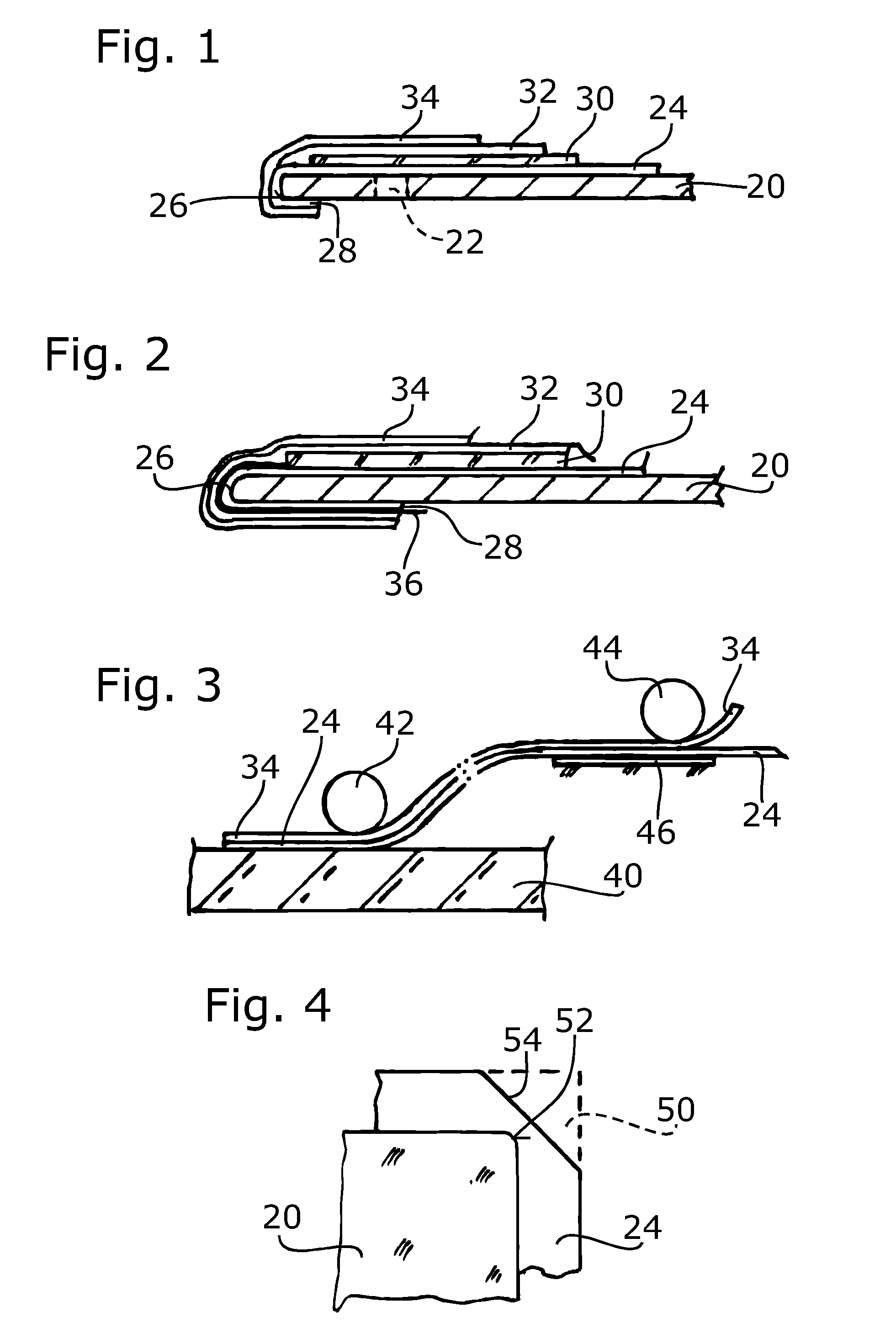Encapsulated Solar Cell
a solar cell and solar cell technology, applied in photovoltaics, sustainable buildings, electrical equipment, etc., can solve the problems of solar cell rust and possible corrosion of antireflection coatings, and achieve the effect of preventing air pockets and cost-effective production
- Summary
- Abstract
- Description
- Claims
- Application Information
AI Technical Summary
Benefits of technology
Problems solved by technology
Method used
Image
Examples
Embodiment Construction
[0063]The encapsulated solar cell shown in FIG. 1 has a substrate 20, which is for example an aluminum sheet; it may have openings 22, through which the material of the layers comprised of thermoplastic silicon can flow.
[0064]A lower layer 24 comprised of thermoplastic silicon, which is approximately 500 μm thick, is located on the upper main surface of the substrate 20. As shown in FIG. 1, the surface area of this lower layer 24 is larger than the substrate 20. It is wrapped around the edges 26 of the substrate and abuts with its end regions 28 the undersurface of the substrate 20. The contact between the lower layer 24 and the substrate 20 is bubble-free. A bond has been achieved there.
[0065]A solar cell 30 is applied to the lower layer 24. This involves a state-of-the-art solar cell. Its surface area can be slightly smaller than the substrate 20, it can, however, virtually also be as large as that of the substrate 20. An upper layer 32 is applied onto this solar cell 30 and to th...
PUM
| Property | Measurement | Unit |
|---|---|---|
| thickness | aaaaa | aaaaa |
| thick | aaaaa | aaaaa |
| thick | aaaaa | aaaaa |
Abstract
Description
Claims
Application Information
 Login to View More
Login to View More - R&D
- Intellectual Property
- Life Sciences
- Materials
- Tech Scout
- Unparalleled Data Quality
- Higher Quality Content
- 60% Fewer Hallucinations
Browse by: Latest US Patents, China's latest patents, Technical Efficacy Thesaurus, Application Domain, Technology Topic, Popular Technical Reports.
© 2025 PatSnap. All rights reserved.Legal|Privacy policy|Modern Slavery Act Transparency Statement|Sitemap|About US| Contact US: help@patsnap.com



